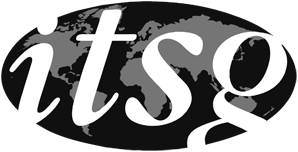Corporate Tax Guide: Ireland

Members:
- Lisa Cantillon (KTA)
- Jane Florides (KTA)
- Patrick Kinnane (KTA)
- Martin Phelan (Simmons & Simmons)
|
1. Country
The information is valid for the entire country except where indicated. For example, in the case of Malaysia, Labuan is part of Malaysia but has a special tax regime, so this is noted. |
Ireland. | ||||||||||||||||||||||||
|
The corporate tax rate shown is the typical corporate tax rate that a domestic corporation owned by non-resident persons would pay. The tax rate does not include withholding tax on dividends, but does include a distribution tax shown separately if applicable. Certain countries have a low corporate tax rate, but charge an additional tax when a dividend is distributed. Because this tax is paid by the corporation, and not deducted from the amount of the dividend itself, it is not a dividend withholding tax. As a result, it typically cannot be reduced by an international tax treaty. |
12.5% on trading income, 25% on passive income. | ||||||||||||||||||||||||
|
The basis of taxation for a corporation will typically be one of:
|
If tax resident in Ireland, corporation tax ("CT") is charged on worldwide income. A non-Irish tax resident company may still be chargeable to tax in relation to Irish branch profits, Irish source income (e.g., rents) and/or gains arising from certain Irish assets. | ||||||||||||||||||||||||
|
Where non-resident corporation carries on business in a country, business profits may be subject to corporate tax. In addition, a branch profits tax may apply in lieu of dividend withholding tax. This branch profits tax applies to the after tax profits, typically at a fixed percentage. An international tax treaty may reduce the rate of branch profits tax, typically to the rate provided for dividend withholding. |
The branch will be liable to CT on profits and gains attributable to the branch, if the company is not tax resident in Ireland. | ||||||||||||||||||||||||
|
The common forms of business entity are noted. In addition, the entities which are flow through entities for U.S. tax purposes are indicated. |
Sole trader, limited liability company (private company limited by shares "LTD" or designated activity company "DAC"), Partnership, Limited Partnership, Business Trust, Unlimited Liability Company. | ||||||||||||||||||||||||
|
Capital gains may be fully taxed, partially taxed or not at all. In certain countries, an exemption, called the participation exemption, will apply to exempt from tax a capital gain from disposition of a substantial holding of shares of a subsidiary. Where a participation exemption is applicable, it is noted together with a summary of the main conditions. |
Chargeable gains are subject to corporation tax at a rate of 33%. Relief is given for inflation by applying an index factor for the period of ownership of an asset up to 31 December 2002. Participation type exemption available. | ||||||||||||||||||||||||
|
Certain countries allow group taxation, otherwise known as consolidated tax filing. Here the tax returns of a group of corporations in the country may be combined together, which can be useful. If group taxation is permitted, it is noted along with the main conditions. |
Group relief may be claimed where one member of a group is entitled to surrender its trading loss to another member of the same group. In order to be deemed a member of a group, the following conditions must be satisfied:
| ||||||||||||||||||||||||
|
Countries offer various kinds of special exemptions and incentives. Examples are a reduced tax rate, a tax holiday, a tax credit on the purchase of equipment, special accelerated deductions for deprecation, incentives for R&D, and various others. Here the major items are noted. |
| ||||||||||||||||||||||||
|
Many countries have thin capitalization rules which limit or deny the deduction of interest expense in certain circumstances. For example, if debt exceeds three times equity, a proportionate amount of interest expense may not be deductible. Limitations take various forms, restricting the interest expense deduction to a percentage of profit, deeming the debt to be equity and the interest to be a payment of dividends, and various other rules which may blend of these principles. Where a country has thin capitalization rules, they are briefly described. |
No. However, there are certain rules that seek to re-characterise interest payments as distributions in certain circumstances. | ||||||||||||||||||||||||
|
Many countries have transfer pricing rules. They very often follow the OECD guidelines and the arms length principle. Some countries have specific rules which apply in certain cases. In addition, some countries allow for a selection of the most appropriate transfer pricing methodology in the circumstances, while other countries follow a hierarchy of methods, with the CUP method (comparable uncontrolled price) often ranking first. The transfer pricing rules are briefly explained. |
Yes (since 1 January 2011). OECD Guidelines. Grandfathering provisions apply to arrangements entered into before 1 July 2010. Exemptions apply for SMEs, which are companies with fewer than 250 employees and turnover of less than €50 million or assets of less than €43 million. The codified transfer pricing provisions have only recently been introduced to Irish legislation and it remains to be seen whether the Revenue Commissioners will have a priority for particular methods. | ||||||||||||||||||||||||
|
11. CFC Rules
Many countries tax passive income earned in controlled foreign corporations (CFC’s) on an imputation basis while active income is not taxed. Such CFC rules are usually complex and vary significantly in what is considered passive income, and how foreign tax paid is taken into account. Some countries approach CFC rules on the basis of whether or not the foreign corporation is resident in a low tax jurisdiction or a tax haven. This may be done through a black list of countries. The general overview of CFC rules is described in simple terms. |
No. | ||||||||||||||||||||||||
|
Profits repatriated by way of dividends from a subsidiary to a parent company are typically taxed in one of three ways:
|
A tax credit rather than an exemption scheme applies. Branch operations: Tax credit can be claimed on foreign CT paid on profits of the branch, even if located in a non-treaty country. Any excess credit can be pooled and credited against Irish tax on profits in other branches. Subsidiary companies: Dividends taxable at 25%. Companies can elect to tax certain "trading" income at 12.5% if subsidiary is resident in EU or is a country with which Ireland has a double taxation agreement ("DTA country"). Credit may also be available for DWT deducted and for any underlying tax paid by subsidiary. | ||||||||||||||||||||||||
|
Most countries allow a foreign tax credit based on a formula, typically net foreign income over the net income times taxes payable. This limits the foreign tax credit to roughly the domestic tax otherwise applicable to the foreign income. There are numerous variations and technical rules in the details of foreign tax credit calculations. Where a foreign tax credit is allowed, the general principles are described. |
Yes - as per 12 above. | ||||||||||||||||||||||||
|
14. Losses
Losses typically can be carried forwards for a period of years, and sometimes can be carried back. Losses may be segregated into capital losses and non capital losses. |
Losses and charges arising from a trade taxable at the standard trading rate of CT (12.5%) can be offset in the current and previous accounting period against income taxable at the standard trading rate or on a value basis against income taxable at the higher rate of tax (25%). Trading losses can be carried forward indefinitely to be set against future trading profits. A tax credit against the tax arising on non-trading income can be applied in respect of losses arising from non-trading income of the same rate. The offset of current year trading losses will be restricted where the tax return is not filed by the deadline date. | ||||||||||||||||||||||||
|
It is not practical to list all of the tax treaties which a country has in a simple guide like this. Accordingly, a link is provided in each case to the tax treaties. Some countries have entered into Tax Information Exchange Agreements (TIEA). Treaties are more and more containing provisions that limit benefits (LOB provisions). |
Yes.
| ||||||||||||||||||||||||
|
Withholding tax rates vary considerably from treaty to treaty, and countries may have domestic exemptions applicable in certain circumstances (for example copyright royalties, interest paid to arm’s length persons, etc.). A table shows the typical rates but cannot adequately summarize all of the details. The applicable treaty should be consulted. |
1 Under Irish domestic legislation, interest payments made by companies to companies resident in other EU member states or in treaty countries are generally not subject to interest WHT. 2 Tenant obliged to withhold 20% of gross rents where rents are paid to a non-resident landlord. 3 Under Irish domestic legislation, a purchaser is obliged to withhold 15% from the sale proceeds of Irish specified assets or shares deriving their value from Irish land, buildings or mineral rights if the vendor cannot produce a CGT clearance certificate. Also see point 28 below. | ||||||||||||||||||||||||
|
17. Taxation Year
Some countries allow for the selection of year-end while other countries specify a particular year-end which all business entities must have. Normally the taxation year cannot exceed 12 months. Where it can exceed 12 months, this is noted. |
Any year-end is available by choice. Cannot exceed 12 months, but may be less. | ||||||||||||||||||||||||
|
This is the due date for filing a tax return. Where extensions are available, this is noted. |
For both small and large companies, the balance of CT is paid when the tax return is filed, by the 23rd day of the ninth month after the end of the accounting period. Returns must normally be filed electronically using Revenue's Online System ("ROS"). | ||||||||||||||||||||||||
|
19. Tax Instalments
The typical tax instalment requirements are noted. |
Companies are obliged to pre-pay a portion of their CT liability by way of “preliminary tax”. Small companies make one preliminary tax payment. Large companies must pay preliminary tax in two instalments, the first by the 23rd day of the sixth month during the accounting period and the second by the 23rd day of the month preceding the end of the accounting period. | ||||||||||||||||||||||||
|
20. Payment of Tax
This is the date when the corporate tax owing for the year must be paid. It may be different from the tax return filing due date. |
Preliminary tax must be paid as per the above. The balance of tax, if any, is paid when the tax return is filed, by the 23rd day of the ninth month after the end of the accounting period. | ||||||||||||||||||||||||
|
This is the period after which the tax department cannot in normal circumstances reassess a taxation year. It is sometimes referenced to the end of the taxation year and sometimes to the date of the first assessment of that taxation year. |
Time limits vary under different sections of the relevant legislation. General five-year time limit for the making of a tax assessment by the tax authorities. No time limit for cases involving fraud or negligence or tax avoidance transaction. | ||||||||||||||||||||||||
|
If a country has exchange controls, this is noted, together with the main requirements. |
No. | ||||||||||||||||||||||||
|
23. VAT
A VAT tax system typically provides that the supply of goods and services is classified as taxable, tax exempt, or zero rated. Where a business is engaged in an activity which is taxable, it must charge VAT on its revenue, and can claim a refund of VAT on its expenditures. Where the activity is exempt, it does not charge VAT on its revenue, and cannot claim back VAT paid. Where the entity is engaged in activities which are zero rated (typically agriculture, food services and exports), then it can claim back VAT which it has paid on its expenditures, and does not charge VAT on its revenue. If a country has a typical VAT system, this is noted. If a country has no VAT system but a sales tax system, this is indicated. Some countries may have a mixture, and taxes may apply at different levels (federal and state for example). |
Yes. The standard rate of VAT is currently 23%. The other rates of VAT are 13.5%, 9%, 5.4%, 4.8%, 0% and exempt. | ||||||||||||||||||||||||
|
Stamp duty, or land transfer tax, can apply on such things as the transfer of shares, land, or the issuance of bonds or debentures. This is described together with the applicable rates. |
Yes. Stocks and marketable securities where the consideration is in excess of €1,000: 1% Residential property: 1% on first €1,000,000 and 2% on excess over €1,000,000. Non-residential property (including asset deals): 2%. However, where assets are capable of being transferred by delivery and are transferred by delivery, no stamp duty applies. Lease: 1%, 6% or 12% of average annual rent, depending on the length of the lease. | ||||||||||||||||||||||||
|
25. Capital Tax
If capital tax is payable, this is described. Capital tax may apply in specialized industries, such as banking and insurance, even if a country does not generally apply a capital tax to corporations. |
No. | ||||||||||||||||||||||||
|
26. Other Taxes
Where significant, other taxes are noted. |
Universal social charge (USC), Local Property tax and levies such as pay-related social insurance (PRSI). | ||||||||||||||||||||||||
|
Anti-Avoidance Rules take many forms, the most common ones are a general anti-avoidance rule, treaty shopping limitations, the requirement for economic substance (or a business purpose in carrying out transaction) and specific anti-avoidance rules for particular purposes. A very brief overview of the anti-avoidance rules is described. |
Yes. GAAR. The threshold is that it would be reasonable to consider that
| ||||||||||||||||||||||||
|
Where a non-resident person holds shares of a corporation established in the country listed, the capital gain which results may be taxable or not taxable depending on the circumstances and, possibly, the existences of an international tax treaty. The general rules are noted. |
Sale of shares in an unquoted Irish company by a non-Irish resident person shall not be liable to CGT unless the shares in the company being sold derive their value or the greater part of their value from land or minerals in Ireland, other than shares quoted on the stock exchange. | ||||||||||||||||||||||||
|
Where a corporation is acquired through the purchase of shares, sometimes a step up is allowed so that the cost of its assets can be revalued. The main rules are briefly summarized. |
No. Basis created in asset acquired only. | ||||||||||||||||||||||||
|
30. Use of Rulings
In some countries, rulings are commonly used (and sometimes even required). In other countries the system is either unavailable or not commonly used except in special circumstances. |
There are no rulings available but the Irish Revenue Commissioners do on occasion give advance opinions. In the recent European Commission Decision on State Aid implemented by Ireland to Apple, the Commission determined that these advance opinions were substantively the same as rulings. Four-year time limit on rulings. | ||||||||||||||||||||||||
|
31. Other
Other important aspects of the tax system are noted. |
Country by country reporting: In compliance with OECD recommendations. For accounting periods beginning on or after 1 January 2016, Irish headquartered companies must file a country-by-country report to Revenue within twelve months from the end of their accounting period. Exemption applies to groups with an annual consolidated group revenue of less than €750 million. |

 Login
Login

















































